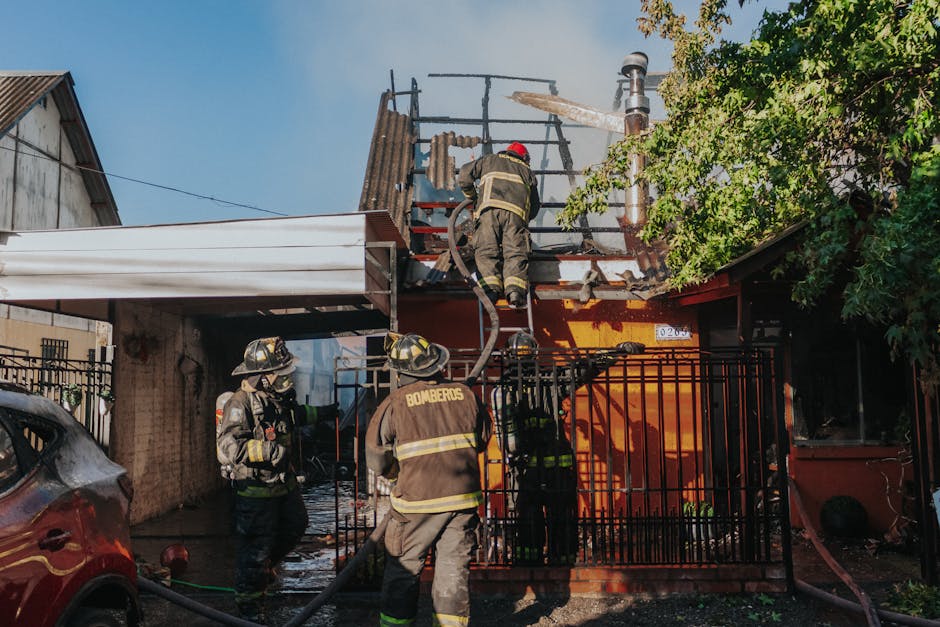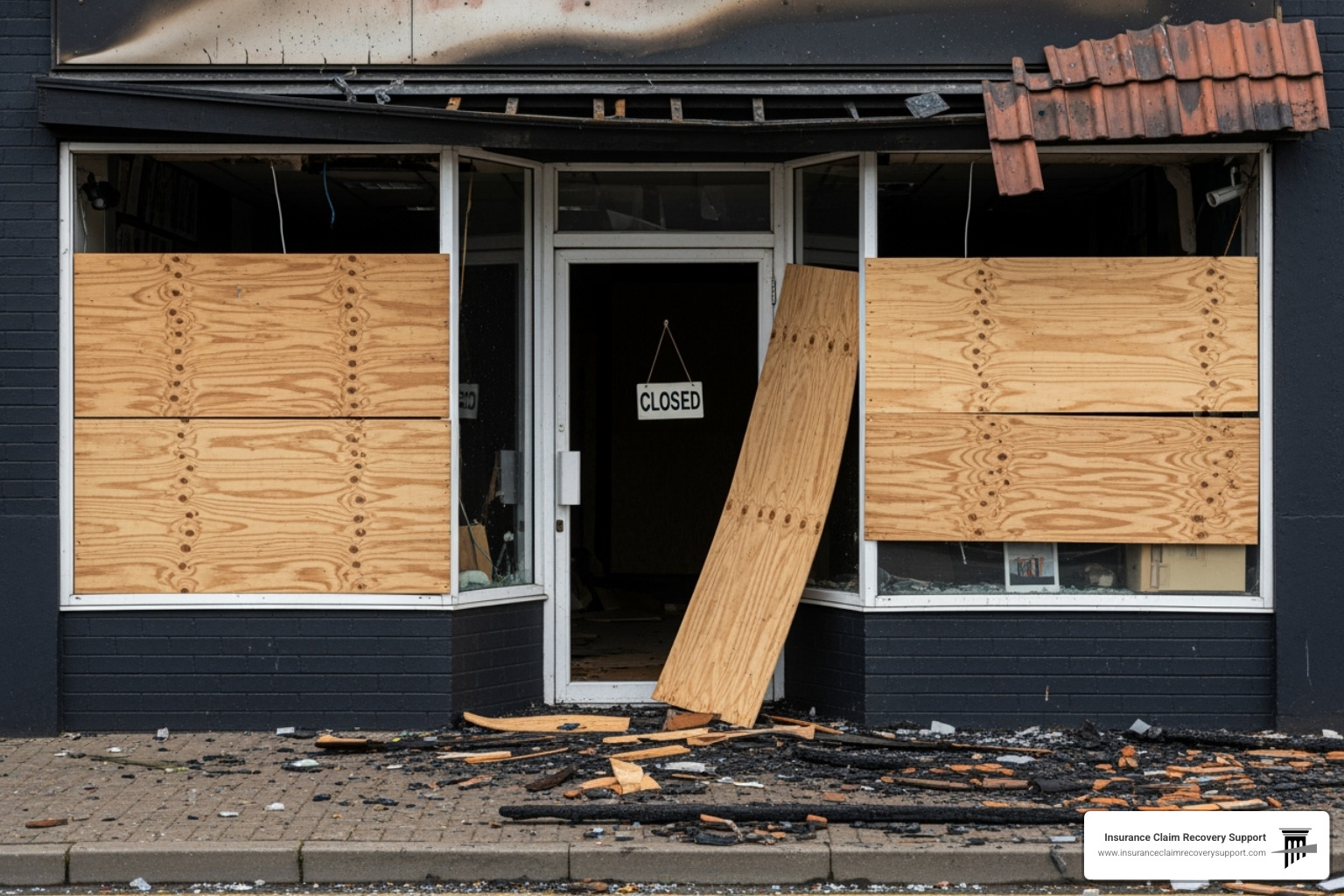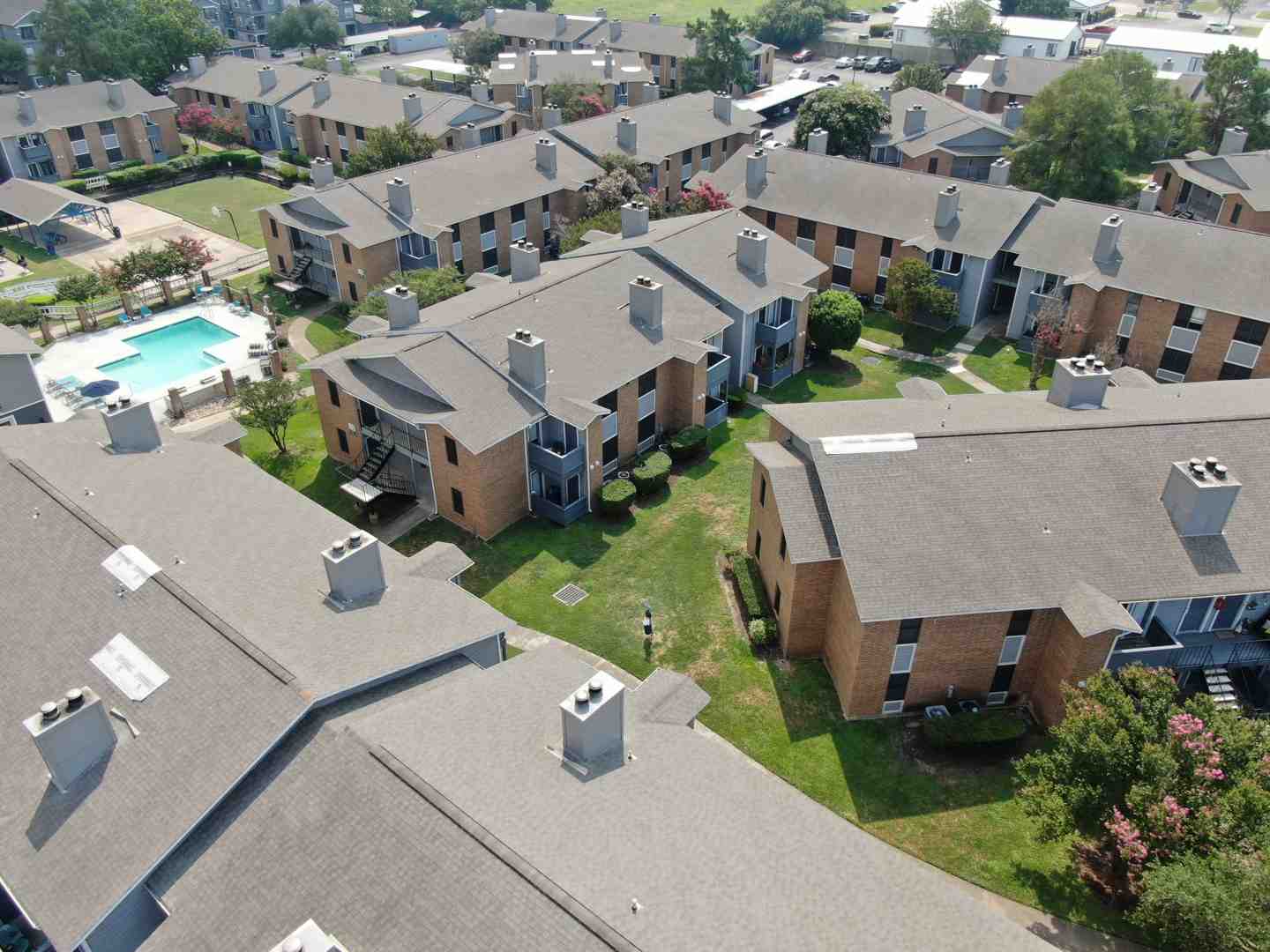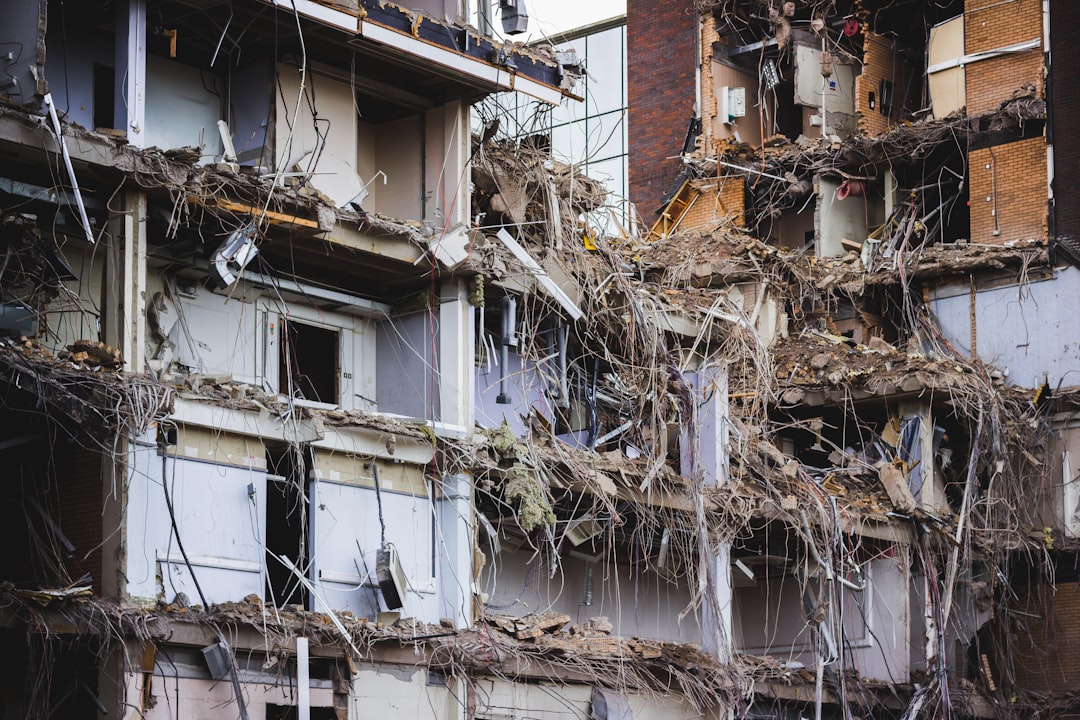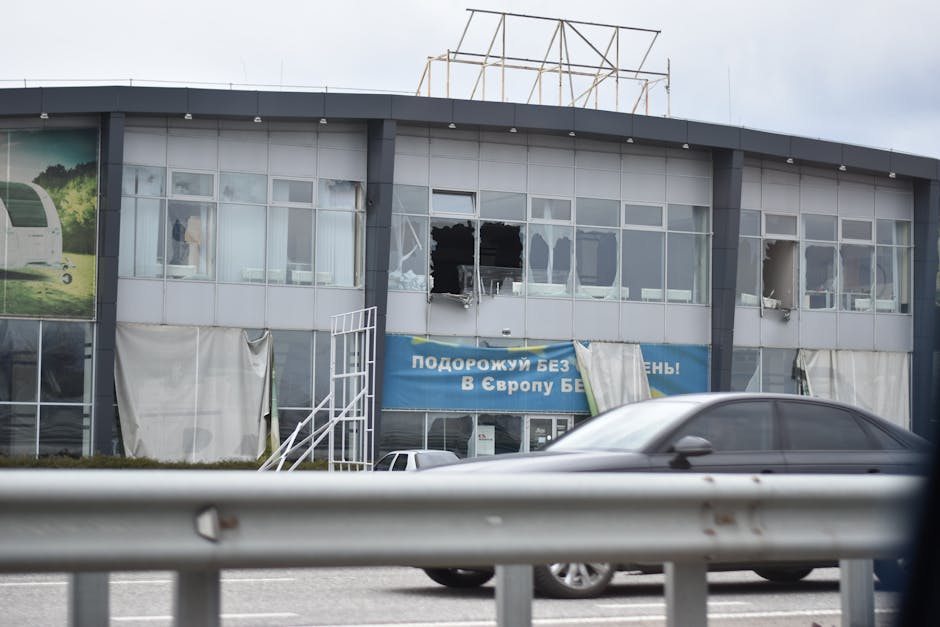HOA fire safety is a crucial concern for any community, whether in a condo building or a suburban neighborhood. The responsibilities of a Homeowners Association (HOA) in maintaining community safety cannot be understated. Proper fire management involves:
- Educating residents on fire safety practices
- Regular inspection and maintenance of fire alarms and systems
- Constructing and maintaining fire-safe landscapes
- Collaborating with local fire departments for expert advice and support
Community associations play a vital role in fire prevention and response, providing a critical line of defense against the destructive potential of fires. The importance of these responsibilities extends beyond preventing material damage; they are pivotal in safeguarding lives and maintaining peace of mind among residents.
As Scott Friedson, a multi-state licensed public adjuster and CEO of ICRS LLC, I have extensive experience managing and recovering from property damage, including fires, for homeowners’ associations and similar entities. My work involves ensuring that these communities are prepared for fire risks and can steer the aftermath effectively.
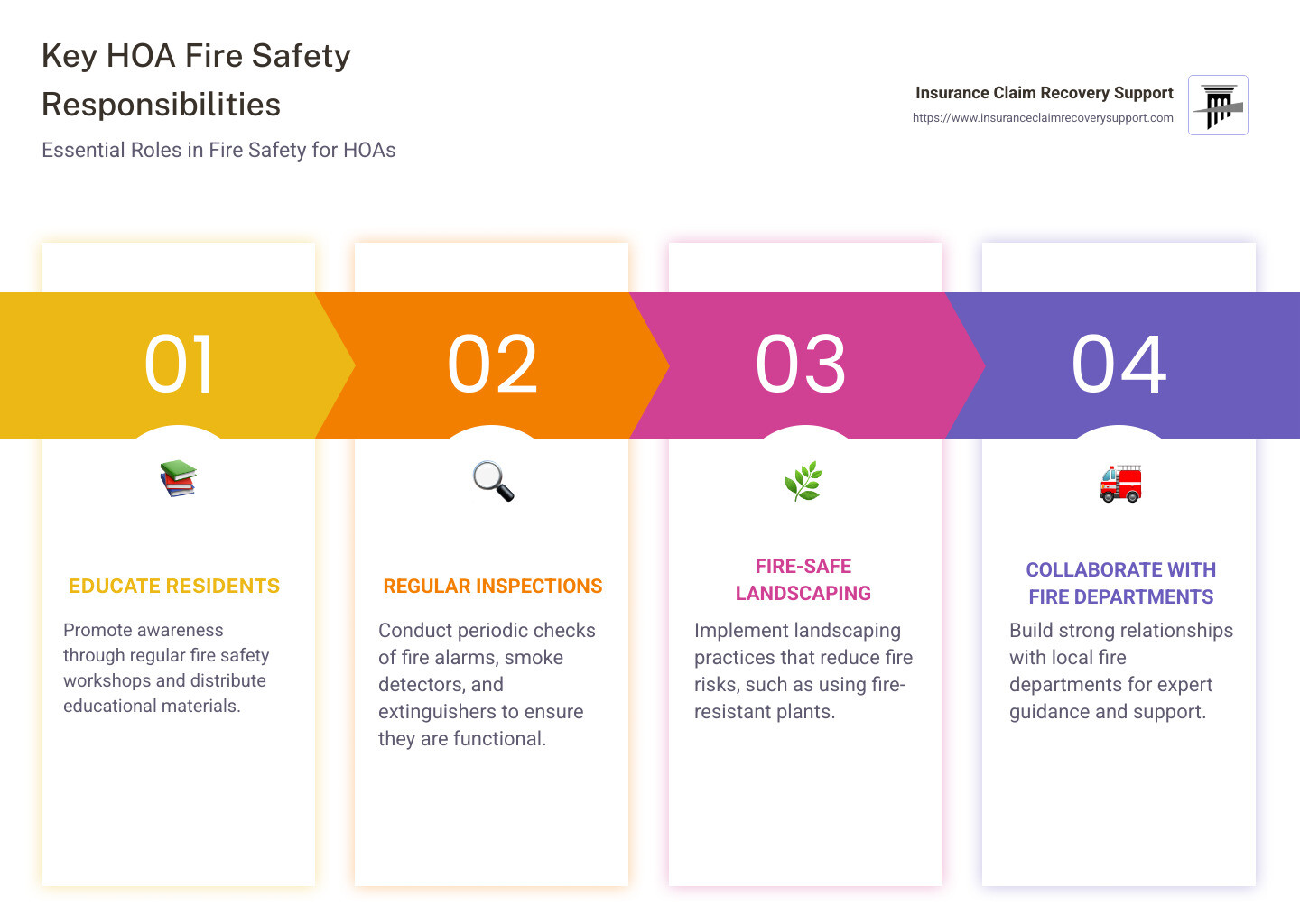
Hoa fire basics:
– Apartment fire insurance claim
– Apartment building fire
– Fire mitigation
Understanding HOA Fire Risks
Homeowners’ Associations (HOAs) face unique fire hazards that require careful attention and proactive management. Let’s break down the key risks that HOAs must address to keep their communities safe.
Fire Hazards in HOA Communities
Fire hazards in HOA communities can stem from various sources. One major risk is dry landscaping. When vegetation is not regularly watered or maintained, it becomes a tinderbox, ready to ignite with the slightest spark. This is especially true in areas prone to drought or during hot summer months.
Another common fire hazard is unattended flames. Whether it’s a grill left burning on a balcony or a candle flickering near flammable materials, unattended flames can quickly lead to disaster. HOAs need to establish clear guidelines to regulate the use of open flames in communal and private areas.
The Role of Dry Landscaping
Dry landscaping isn’t just an aesthetic choice; it poses a significant fire risk. Dry vegetation can catch fire easily and spread rapidly, endangering homes and lives. To mitigate this risk, HOAs should prioritize maintaining lush, well-watered landscapes. This not only reduces fire risk but also improves the beauty and value of the community.
- Trim and Water Regularly: Keep trees, shrubs, and grass well-trimmed and hydrated.
- Choose Fire-Wise Plants: Opt for plants with higher moisture content and fewer flammable oils.
The Danger of Unattended Flames
Unattended flames are a preventable hazard that can lead to catastrophic fires. Simple actions can reduce these risks:
- Ban or Regulate Grills and Fire Pits: Consider banning grills on balconies or require certain safety measures.
- Educate Residents: Regularly remind residents of the dangers of leaving flames unattended and the importance of extinguishing them properly.
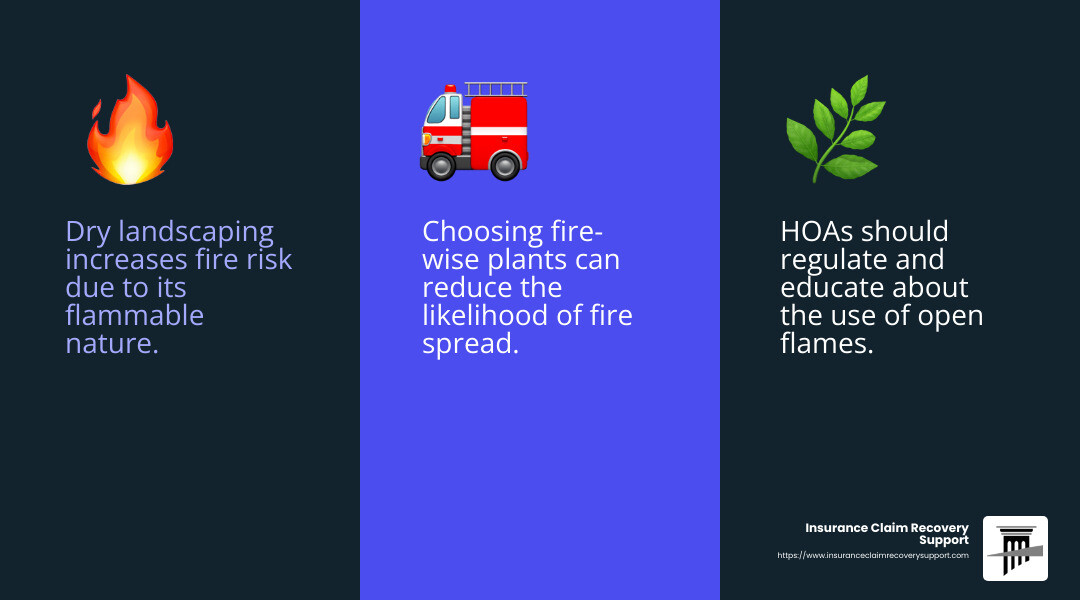
By understanding and addressing these hoa fire risks, communities can significantly decrease the likelihood of fire incidents. It’s about creating a safer, more informed community where everyone plays a part in fire prevention.
Next, we will explore essential fire safety practices that every HOA should implement to further safeguard their residents and properties.
Essential Fire Safety Practices for HOAs
To keep communities safe, HOAs must implement effective fire safety practices. These practices not only help in preventing fires but also ensure residents are prepared in case of an emergency. Here’s how HOAs can achieve this.
Educating Residents
Fire safety education is crucial in preventing fires and minimizing damage. HOAs should conduct regular fire safety awareness sessions for residents. These sessions can cover:
- Fire Prevention Tips: Teach residents how to identify potential fire hazards, such as overloaded electrical outlets and improper storage of flammable materials.
- Safe Appliance Usage: Provide guidelines on the safe use of appliances and equipment, emphasizing the importance of turning off devices when not in use.
- Community Resources: Share resources like local fire department contact information and emergency procedures.
By educating residents, HOAs empower them to take proactive steps in fire prevention and safety.
Regular Maintenance
Regular maintenance of fire safety equipment is essential to ensure it functions correctly during emergencies. Here’s what HOAs should focus on:
-
Smoke Alarms and Smoke Detectors: Ensure every residential unit is equipped with working smoke alarms. Establish a regular testing and battery replacement schedule to maintain their effectiveness. Educate residents about the importance of keeping these devices functional.
-
Carbon Monoxide Alarms: Install carbon monoxide alarms in all units, as carbon monoxide is a silent and deadly threat. Regular testing and maintenance of these alarms are crucial.
-
Fire Extinguishers: Place fire extinguishers in common areas like hallways and recreational facilities, as well as near high-risk areas such as kitchens and laundry rooms. Conduct fire extinguisher training sessions for residents, teaching them proper usage techniques. Ensure extinguishers are easily accessible and regularly inspected for usability.
By adhering to these hoa fire safety practices, communities can significantly reduce the risk of fire incidents. These steps not only protect lives but also preserve property, creating a safer environment for everyone.
Next, we will discuss the importance of building relationships with local fire departments and how they can assist HOAs in maintaining fire safety.
Building Relationships with Local Fire Departments
Creating strong connections with local fire departments is essential for effective HOA fire management. These partnerships improve safety and ensure that communities are well-prepared for fire emergencies. Here’s how HOAs can build and maintain these vital relationships:
Fire Department Connections
Establishing a direct line of communication with your local fire department is crucial. This connection allows for quick access to expert advice and emergency assistance when needed. Invite fire department representatives to HOA meetings to discuss community-specific fire risks and prevention strategies.
Case Study: In San Jose, CA, an HOA board successfully partnered with their local fire department, which resulted in faster response times and improved fire safety protocols. George P., a board member, noted, “The ease for our property managers to use one company offering a comprehensive service was a no-brainer.” This partnership not only improved safety but also brought peace of mind to residents.
Role of the Fire Marshal
The fire marshal plays a critical role in ensuring community safety. They are responsible for conducting inspections and ensuring compliance with fire safety regulations. HOAs should work closely with the fire marshal to:
- Schedule regular inspections: This helps identify potential fire hazards and ensures compliance with local fire codes and regulations.
- Address violations promptly: If any violations are found, work with the fire marshal to resolve them quickly and efficiently.
Quote: “Compliance with fire codes and regulations is not just about avoiding fines; it’s about saving lives,” says a fire marshal in the Bay Area.
Inspections and Community Safety
Regular fire safety inspections are essential for maintaining a safe environment. These inspections should cover:
- Fire alarm systems: Ensure that all alarms are functional and up-to-date with the latest safety standards.
- Fire sprinkler systems: Regular checks for leaks or damage can prevent system failures during an emergency.
- Exit signs and emergency lighting: These must be visible and operational to guide residents safely during an evacuation.
By fostering strong relationships with local fire departments and involving fire marshals in safety planning, HOAs can significantly improve their hoa fire management efforts. These collaborations not only improve safety but also build trust within the community.
Next, we’ll explore the importance of landscaping and structural safety in preventing fires.
Landscaping and Structural Safety
When it comes to HOA fire management, landscaping and structural safety play a crucial role in preventing fires. By focusing on these areas, communities can reduce fire risks and improve overall safety.
Dry Vegetation
One of the biggest fire hazards in any community is dry vegetation. This includes dead plants, dry leaves, and overgrown grass, which can easily ignite and spread fire rapidly. Regular maintenance is key:
- Remove dead plants and dry leaves: Regularly clear these from common areas to reduce fire risk.
- Prune overgrown shrubs and trees: Keep vegetation trimmed to prevent fire from spreading to structures.
- Create defensible space: Maintain a clearance of at least 30 feet around buildings to act as a fire break.
Fire-Wise Plants
Choosing the right plants can make a significant difference in fire prevention. Fire-wise plants are those that contain more moisture and fewer flammable oils, making them less likely to catch fire. Here are some tips:
- Select fire-resistant plants: Opt for plants like lavender, sage, and certain types of succulents.
- Regularly water and maintain plants: Keeping plants healthy reduces their flammability.
- Strategically place plants: Keep them at least 5 to 10 feet away from structures to prevent fire spread.
Nonflammable Materials
Replacing flammable materials with nonflammable options is a proactive way to improve structural safety:
- Use non-combustible siding: Materials like stucco or fiber cement can protect homes from external fires.
- Install fire-resistant roofing: Options like metal or slate can withstand high temperatures and prevent embers from igniting.
- Create non-combustible zones: Use gravel, stone, or concrete in areas adjacent to buildings as a fire break.
By implementing these landscaping and structural safety measures, HOAs can significantly reduce fire risks in their communities. These proactive steps not only protect property but also ensure the safety of residents.
Next, we’ll discuss the importance of conducting fire drills and emergency preparedness to further improve community safety.
Conducting Fire Drills and Emergency Preparedness
Ensuring the safety of residents in an HOA community means being ready for emergencies. This is where fire drills and emergency preparedness come into play. Let’s break down how these practices can keep your community safe.
Fire Drills
Fire drills are a must for any community. They help residents know what to do if a fire occurs.
- Regular Practice: Conduct fire drills at least once a year. This helps everyone remember what to do in an emergency.
- Alarm Familiarity: Remind residents what the fire alarm sounds like. Knowing this sound can save precious seconds during an actual fire.
- New Residents: Drills are especially helpful for new residents. They learn the quickest routes and procedures to follow.
Evacuation Plans
A clear evacuation plan is essential. It helps ensure everyone knows where to go during a fire.
- Route Maps: Post evacuation maps in common areas like hallways and community centers. These maps should show all exits and safe assembly points.
- Assembly Points: Designate safe areas where residents can gather after evacuating. Ensure these areas are far enough from buildings to be safe from fires.
Physical Requirements
Understanding the physical demands of evacuating is crucial, especially for those with mobility issues.
- Assess Needs: During drills, identify residents who may need assistance evacuating. This includes those on higher floors or with mobility challenges.
- Plan for Assistance: Make sure there are plans to help these individuals during an emergency. This might involve assigning neighbors or staff to assist them.
By conducting regular fire drills and having a solid evacuation plan, communities can improve their readiness for emergencies. These practices are vital in ensuring that everyone knows what to do and where to go, reducing panic and confusion during real events.
Next, we’ll explore how regulating fire hazards within the community can further prevent fires and keep everyone safe.
Regulating Fire Hazards in the Community
Managing fire hazards is crucial for keeping your community safe. By setting clear rules and guidelines, HOAs can significantly reduce the risk of fires. Let’s explore some key areas where regulations can make a big difference.
Grills
Grills are a common fire hazard, especially in tightly packed communities.
-
Location Restrictions: It’s wise to ban grills on balconies or within a certain distance of homes. This prevents accidental fires from spreading to nearby structures.
-
Designated Areas: Provide a safe, designated area for grilling. This area should be equipped with fire safety measures, like fire extinguishers and clear emergency contact information.
Portable Fireplaces
Portable fireplaces and other mobile fire devices can also pose risks if not properly managed.
-
Usage Guidelines: Restrict the use of portable fireplaces to open spaces away from buildings. This minimizes the chance of a fire spreading to structures.
-
Material Restrictions: Encourage residents to use fire-safe materials, like gas or electric fireplaces, instead of wood-burning ones. These alternatives are typically safer and easier to control.
Community Guidelines
Having clear community guidelines is essential for enforcing fire safety rules effectively.
-
Rule Amendments: If your current HOA governing documents lack fire hazard restrictions, consider amending them. Consult with an HOA lawyer to ensure rules are enforceable and legally sound.
-
Resident Education: Educate residents about the importance of these restrictions. Informational sessions or newsletters can keep everyone informed and compliant.
By regulating fire hazards like grills and portable fireplaces, HOAs can create a safer environment for everyone. These measures not only prevent fires but also promote a culture of safety and responsibility.
Next, we’ll answer some frequently asked questions about HOA fire management, providing clarity on common concerns and how to address them effectively.
Frequently Asked Questions about HOA Fire Management
What steps should be taken if HOA board harassment occurs?
Dealing with harassment from an HOA board can be stressful, but there are steps you can take to protect yourself.
-
Document Everything: Keep a detailed record of all interactions that you believe constitute harassment. This includes emails, letters, and notes from meetings.
-
Seek a Restraining Order: If the harassment is severe, consider seeking a restraining order. This legal tool can help protect you from further unwanted contact.
-
Involve the Police: For serious cases, don’t hesitate to involve local law enforcement. They can provide guidance and take action if necessary.
Taking these steps can help you address harassment effectively and ensure your rights are protected.
How can HOAs enforce fire safety rules?
Enforcing fire safety rules is critical for maintaining a safe community environment.
-
Create Enforceable Rules: Work with legal experts to draft clear, enforceable fire safety guidelines. These rules should be included in the community’s governing documents.
-
Community Guidelines: Regularly update and communicate guidelines to residents. Use newsletters, meetings, or online platforms to keep everyone informed.
-
Regular Inspections: Conduct routine inspections to ensure compliance with fire safety rules. Address any violations promptly to prevent potential hazards.
By implementing these strategies, HOAs can effectively enforce fire safety rules and maintain a secure community.
What is the role of HOA insurance in fire incidents?
HOA insurance plays a crucial role in managing fire-related incidents. Understanding the types of coverage can help in navigating potential claims.
-
Bare Walls Coverage: This type of policy typically covers the physical structure of the building, excluding individual units. It ensures that common areas are protected in the event of a fire.
-
Insurance Claims: In case of a fire, the HOA board should promptly file an insurance claim. This process can be complex, and involving a public adjuster can help ensure a fair settlement.
-
Policy Review: Regularly review the HOA’s insurance policies to ensure adequate coverage. This can prevent gaps in coverage and provide peace of mind for all residents.
By understanding the role of HOA insurance, communities can better prepare for and respond to fire incidents, ensuring swift recovery and protection of shared assets.
Conclusion
Fire incidents can have devastating effects on communities, but with the right support, recovery is possible. At Insurance Claim Recovery Support, we specialize in helping policyholders steer the complex world of fire damage claims. Our expertise ensures that you receive the compensation you deserve, alleviating the financial stress of recovery.
Advocating for Policyholders
We understand the emotional and financial toll a fire can take on homeowners’ associations (HOAs) and their residents. Our commitment is to stand by our clients every step of the way, offering strong advocacy against insurance companies to secure fair settlements. We work exclusively for policyholders, not insurance companies, which means our focus is entirely on getting you the best outcome.
Expert Support for Fire Damage Claims
Navigating the insurance claim process can be daunting, especially after a fire. Our team is adept at handling all aspects of fire damage claims, ensuring that no detail is overlooked. We believe in empowering our clients through education and strong advocacy, making the claims process as seamless as possible.
Our track record speaks volumes, with hundreds of satisfied clients who have successfully steerd the claims process with our help. We serve clients nationwide, with a strong presence in Texas, including Austin, Dallas-Fort Worth, San Antonio, Houston, and more.
Your Partner in Recovery
With Insurance Claim Recovery Support, you don’t have to face the aftermath of a fire alone. We are here to help you rebuild, recover, and restore your peace of mind. By choosing us, you’re opting for a partner who is dedicated to your recovery journey.
For more information on how we can assist with your fire damage claim, visit our Multi-Family Insurance Claims page. Let us help you secure the compensation you rightfully deserve and ensure a safer, more secure future for your community.

